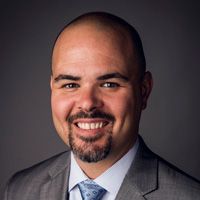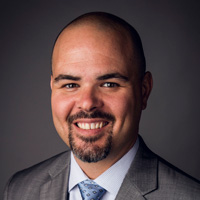What Hidden Obstacles May Snag Your Retirement? 5 Key Points to Consider
To avoid getting hung up unexpectedly, plan for retirement using the “TRICK” method, which stands for taxes, risk tolerance, investment mix, costs and knowledge gaps.


Whether your retirement is over a decade away or getting close, thorough planning is advisable because without it, you could face significant challenges that may not be top-of-mind now. And those issues down the road may affect the lifestyle you desire.
You could stumble across hidden obstacles on your way to retirement, so it’s important to learn more about the potential roadblocks and take the proper steps now to reduce their impact. You could say there’s a “TRICK” to it – an acronym that lays out five crucial elements to consider in your retirement plan:
‘TRICK’ … ‘T’ Is for Taxes
Most people don't take taxes in retirement into consideration as much as they should. If they have sizable amounts of money in pre-tax accounts, as many do with traditional 401(k)s, that money is going to be taxed when withdrawn. Required minimum distributions (RMDs) at age 72 can cause tax problems if the issue is not addressed ahead of time.
From just $107.88 $24.99 for Kiplinger Personal Finance
Become a smarter, better informed investor. Subscribe from just $107.88 $24.99, plus get up to 4 Special Issues

Sign up for Kiplinger’s Free Newsletters
Profit and prosper with the best of expert advice on investing, taxes, retirement, personal finance and more - straight to your e-mail.
Profit and prosper with the best of expert advice - straight to your e-mail.
Converting some of that pre-tax money to Roth IRAs or Roth 401(k)s can be an effective way to reduce the tax burden in retirement. The “trick” is doing the conversion strategically over a number of years and knowing how much to convert each time. The converted amount is taxable each year, but Roth IRAs and Roth 401(k)s are tax-free when withdrawn starting at age 59½, although the accounts also must be held for at least five years. There is no requirement to start taking RMDs from a Roth IRA, whereas there is with a Roth 401(k), but account holders can roll that into a Roth IRA.
Qualified Charitable Distributions (QCDs) are another way to potentially reduce the tax burden of an RMD. You can make a QCD by having your IRA custodian pay part or all of your RMD to a qualified 501(c)(3) charity. The total yearly maximum contribution for QCD is $100,000, and to make a QCD you have to be at least 70½ years of age.
‘R’ Is for Risk Tolerance
Ask yourself: Do you think we could go through another financial crisis like we did in 2008? A big downturn could happen at some point, and if it does, how much would you lose? More specifically, how much could you afford to lose? Whatever that number is, you need to be comfortable with it.
When working with a financial planner, address your risk tolerance and try to balance it between being too risky and too conservative. You most likely will want growth in your investments, but you will want to have a protective mindset for some of your assets as well.
‘I’ Is for Investment Mix
Investments are like different types of tools that are fit for certain types of jobs. For example: If you’re cutting down a shrub, you don’t use a rake. A common problem in the financial industry is you have some people who are basically trying to sell you a product, and you end up trying to rake leaves with a shovel. They’re trying to sell you something, whereas an independent adviser focuses on investments that are based on your specific financial goals.
Still, different products can serve you depending on what you want. Bank-type products including savings accounts, money market accounts and certificates of deposit (CDs) won’t lose money, but they’re probably not going to grow very well. Another type of tool is stock market-based accounts. They can grow very well and are used for long-term growth. But they’re probably not going to be safe; you can’t be guaranteed you won’t lose money at some point, and having success in stocks often means sticking with them over the long haul.
A third tool includes insurance-based solutions: indexed annuities or indexed life insurance. There can be reasonable growth in those vehicles and they’re safe, and they are contractually guaranteed not to lose money. (Guarantees are backed by the financial strength of the issuing company. Products are not bank or FDIC insured.) But there’s usually a time commitment involved.
‘C’ Is for Costs
Clients should have full disclosure about how their advisers’ and account managers’ compensation, commissions and fees work. What’s in it for those people watching your money? Some of these fees are clearly displayed, like with a mutual fund account. But others are hidden or not disclosed as openly. Some financial professionals get a percentage, some work on a retainer. As the consumer, it’s empowering to know how advisers and account managers are paid.
‘K’ Is for Knowledge Gaps
We live in an age when many consumers like to try to do things themselves, but financial planning isn’t like a home improvement video where you can learn how to add a room to your house for half the cost of a contractor. Your financial future and retirement planning take special care that an experienced professional can handle. Consumers are planning their retirement for the first time, but seasoned planners do it for a living and should know the hidden obstacles and how to help maneuver around them. Clients can gain greatly from the adviser’s experience.
Working on your retirement portfolio now can help you see the hidden obstacles well ahead of time. To get where you want to go, you have to know what could stop you and the right moves that will help make your retirement ride as smooth and enjoyable as possible.
Dan Dunkin contributed to this article.
Investment advisory services made available through AE Wealth Management LLC (AEWM). AEWM and NuVenture Financial Group LLC are not affiliated companies.1405765 – 7/22
Investing involves risk, including the potential loss of principal. Any references to [protection benefits, safety, security, lifetime income, etc] generally refer to fixed insurance products, never securities or investment products. Insurance and annuity product guarantees are backed by the financial strength and claims-paying ability of the issuing insurance company.
Our firm is not affiliated with or endorsed by the U.S. government or any governmental agency. Neither the firm nor its agents or representatives may give tax or legal advice. Individuals should consult with a qualified professional for guidance before making any purchasing decisions.
Please remember that converting an employer plan account to a Roth IRA is a taxable event. Increased taxable income from the Roth IRA conversion may have several consequences, including (but not limited to) a need for additional tax withholding or estimated tax payments, the loss of certain tax deductions and credits, and higher taxes on Social Security benefits and higher Medicare premiums. Be sure to consult with a qualified tax adviser before making any decisions regarding your IRA.
The appearances in Kiplinger were obtained through a PR program. The columnist received assistance from a public relations firm in preparing this piece for submission to Kiplinger.com. Kiplinger was not compensated in any way.
Profit and prosper with the best of Kiplinger's advice on investing, taxes, retirement, personal finance and much more. Delivered daily. Enter your email in the box and click Sign Me Up.

Bob Horne is CEO/president of NuVenture Financial Group. A 20-year veteran of the financial services industry, including seven years as an investment adviser representative, Horne served as an assistant vice president and branch manager for HSBC Bank before focusing on retirement planning. He has passed his Series 6, 63 and 65 securities exams and carries a life, health and annuity license in Florida. Horne has also obtained the Retirement Income Certified Professional® (RICP®) certification.
-
 Fed's Rate Cuts Could Have Impacts You Might Not Anticipate
Fed's Rate Cuts Could Have Impacts You Might Not AnticipateUnderstanding how lower interest rates could impact your wallet can help you determine the right financial moves to make.
-
 Past Performance Is Not Indicative of Your Adviser's Expertise
Past Performance Is Not Indicative of Your Adviser's ExpertiseMany people find a financial adviser by searching online or asking for referrals from friends or family. This can actually end up costing you big-time.
-
 I'm want to give my 3 grandkids $5K each for Christmas.
I'm want to give my 3 grandkids $5K each for Christmas.You're comfortably retired and want to give your grandkids a big Christmas check, but their parents are worried they might spend it all. We ask the pros for help.
-
 Past Performance Is Not Indicative of Your Financial Adviser's Expertise
Past Performance Is Not Indicative of Your Financial Adviser's ExpertiseMany people find a financial adviser by searching online or asking for referrals from friends or family. This can actually end up costing you big-time.
-
 I'm a Financial Planner: If You're Not Doing Roth Conversions, You Need to Read This
I'm a Financial Planner: If You're Not Doing Roth Conversions, You Need to Read ThisRoth conversions and other Roth strategies can be complex, but don't dismiss these tax planning tools outright. They could really work for you and your heirs.
-
 Could Traditional Retirement Expectations Be Killing Us? A Retirement Psychologist Makes the Case
Could Traditional Retirement Expectations Be Killing Us? A Retirement Psychologist Makes the CaseA retirement psychologist makes the case: A fulfilling retirement begins with a blueprint for living, rather than simply the accumulation of a large nest egg.
-
 I'm a Financial Adviser: This Is How You Can Adapt to Social Security Uncertainty
I'm a Financial Adviser: This Is How You Can Adapt to Social Security UncertaintyRather than letting the unknowns make you anxious, focus on building a flexible income strategy that can adapt to possible future Social Security changes.
-
 I'm a Financial Planner for Millionaires: Here's How to Give Your Kids Cash Gifts Without Triggering IRS Paperwork
I'm a Financial Planner for Millionaires: Here's How to Give Your Kids Cash Gifts Without Triggering IRS PaperworkMost people can gift large sums without paying tax or filing a return, especially by structuring gifts across two tax years or splitting gifts with a spouse.
-
 'Boomer Candy' Investments Might Seem Sweet, But They Can Have a Sour Aftertaste
'Boomer Candy' Investments Might Seem Sweet, But They Can Have a Sour AftertasteProducts such as index annuities, structured notes and buffered ETFs might seem appealing, but sometimes they can rob you of flexibility and trap your capital.
-
 Quick Question: Are You Planning for a 20-Year Retirement or a 30-Year Retirement?
Quick Question: Are You Planning for a 20-Year Retirement or a 30-Year Retirement?You probably should be planning for a much longer retirement than you are. To avoid running out of retirement savings, you really need to make a plan.
-
 Don't Get Caught by the Medicare Tax Torpedo: A Retirement Expert's Tips to Steer Clear
Don't Get Caught by the Medicare Tax Torpedo: A Retirement Expert's Tips to Steer ClearBetter beware, because if you go even $1 over an important income threshold, your Medicare premiums could rise exponentially due to IRMAA surcharges.